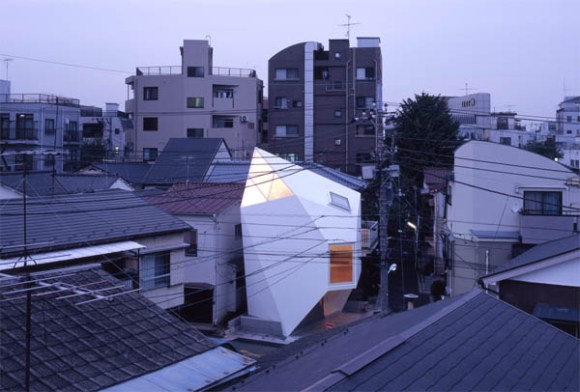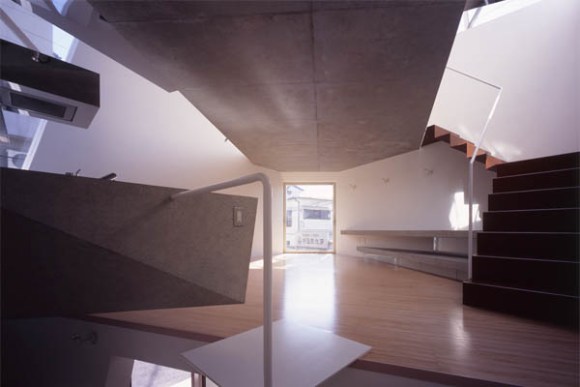
By Glen Whitney for the Museum of Mathematics

Continuing last Math Monday’s theme of building polyhedra, let’s turn to the opposite end of the spectrum from paper models: polyhedra so large and substantial that people can live in them. Here are a couple of striking examples of habitable polyhedral architecture. The first is the Reflection of Mineral house in Nakano-ku, Tokyo:
The unusual form of this house stems from a desire to maximize the usable living space in a building on a small irregular lot on the corner of two streets. That goal was subject to Japanese construction codes which limit the height and roof angles of buildings to ensure sunlight can reach both the neighboring streets, and the property immediately to the north. In the interior image (more of which can be found here) and floor plans below, you can see the beautiful and creative solutions the architects reached in order to conform to the irregular polyhedral space left by the planar constraints imposed by the codes.
The second example is the Habitable Polyhedron by Colombian architect Manuel Villa:
This backyard guesthouse is actually a segment of a truncated cuboctahedron, which can be more easily seen in some of the interior and exterior views gathered here. Coming full circle from last week, you can actually build a paper model of the Habitable Polyhedron using the unfolded version, or net, supplied by the architect:
A nice project might be to create a similar net for the Reflection of Mineral house in Japan, using publicly available information on that building such as the images and floor plans included and linked above.
ADVERTISEMENT










